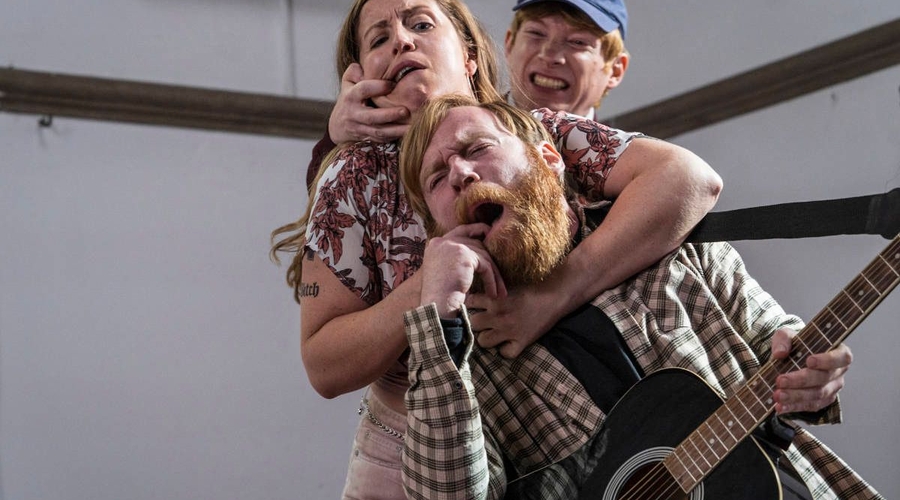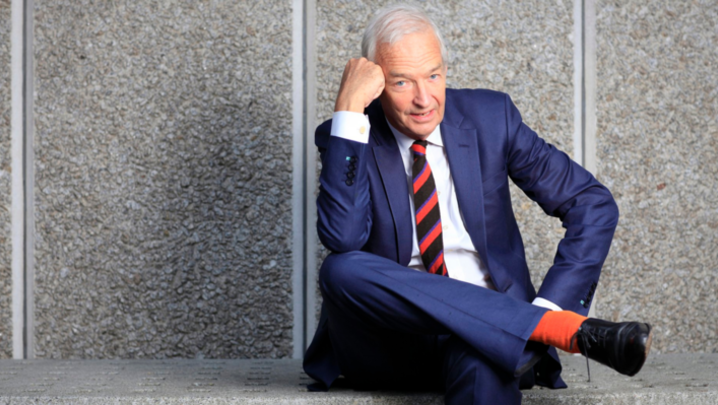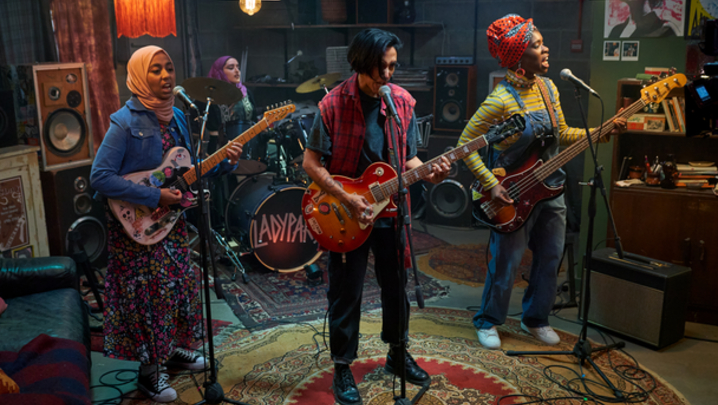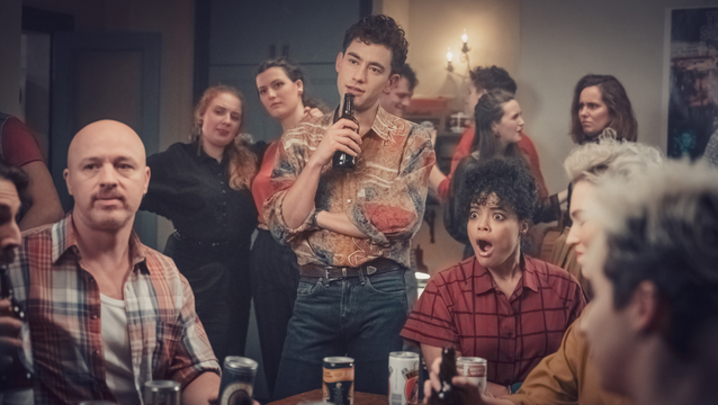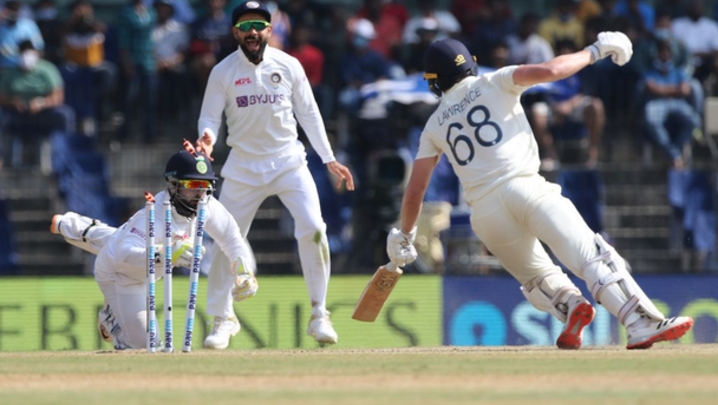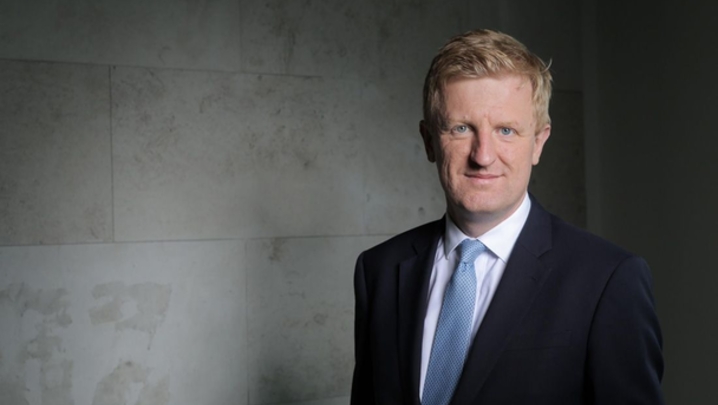An all-star RTS panel discusses the genesis of Channel 4’s Frank of Ireland, a waster for our times.
From Father Ted to Derry Girls, Channel 4’s reputation for Irish comedy is second to none. Now comes Frank of Ireland, a new, six-part series made by Sharon Horgan’s production company, Merman, producer of BBC Two’s Motherland. The show stars Brian Gleeson, who plays the eponymous Frank, and his brother Domhnall. The Gleeson family are, of course, Irish acting royalty.
The broadcaster hopes that Frank Marron, a 32-year-old man locked in an adolescent’s mind, will join that exclusive group of TV comic monsters, who, despite their self-centred ways and empathy deficit, somehow engage our sympathies.
Think, to name but three, of Basil Fawlty, Alan Partridge, or Larry David in Curb Your Enthusiasm – all hilarious but people you’d really want to keep at arm’s length, were you to run into them.
So, just who is Frank and where did he come from? The short answer is that he came from the minds of the distinguished trio of creatives – Michael Moloney and Brian and Domhnall Gleeson – with some input from Horgan, an executive producer on the show.
Frankly, an early inspiration for Frank himself seems a tad mysterious but goes back at least five years. The two Gleeson brothers had worked on a short together, which partly led to the character.
But then, so did another creation worked up by Domhnall Gleeson and Moloney, writing songs together, centred on a struggling country singer.
“When I got the first cut, I couldn’t breathe I was laughing so much. It made me so happy because that never happens."
What we do know about Frank is that he is a walking disaster area – newly single, jobless, living at home with his mother (who doesn’t want him in the house) and an accomplished musician who hasn’t written a song or played a gig in years.
Horgan’s involvement began when Domhnall (he featured as a guest star in an episode of Catastrophe) ran into her in New York and showed her the script. “We didn’t know what we had – was it a film thing or was it just a load of funny stuff?” he recalled.
The idea began to take shape when Merman came on board. Domhnall added: “It was not a million miles away from what we ended up filming, but Sharon was amazing about helping us to turn it into something that could be on the telly.”
“I remember Domhnall being on the Catastrophe set and he was telling me how to talk to actors properly,” she said, smiling at the memory. “I’d seen his Irish sketch show, Your Bad Self, and thought it was the funniest thing I’d ever seen on Irish or UK TV. I keep posting the sketches on Twitter.”
She continued: “I remember, when I read the scripts for Frank of Ireland, that I couldn’t stop laughing. Obviously, we went through a million rewrites and Channel 4 allowed us to do a mini-pilot, which gave us confidence.
“When I got the first cut, I couldn’t breathe I was laughing so much. It made me so happy because that never happens.
“When you’ve been a comedy person for a while, you get a bit jaded, but this cracked me up.”
As for Frank of Ireland’s antecedents, Domhnall Gleeson references Fleabag, Alan Partridge and the physical comedy of Dumb and Dumber – the show contains a lot of slapstick. “You care about Frank because you find out about his vulnerabilities,” noted Horgan.
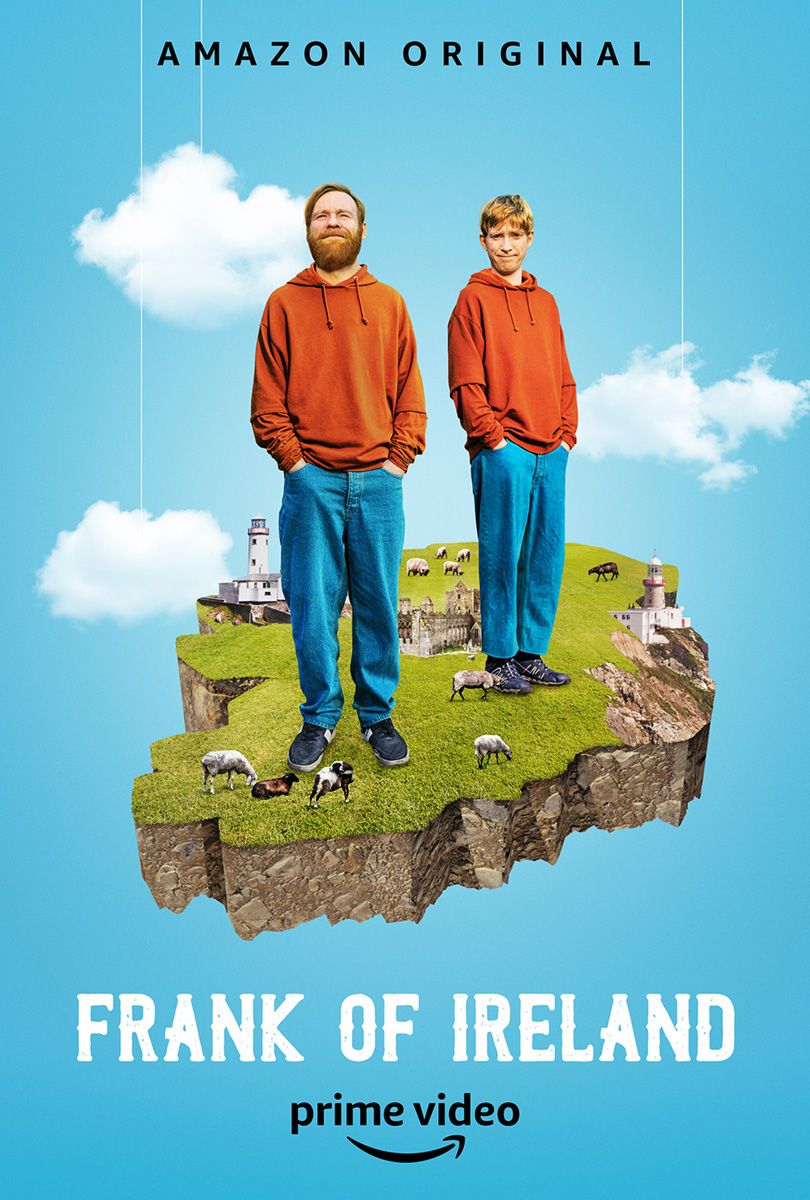
“Frank takes delight and joy in things even if they’re ridiculous,” added Brian Gleeson. “We drew from our childhood, the immediacy of being young and having no responsibility. We took that notion to the extreme.”
“Frank can’t move forward in his life for a lot of different reasons,” said Moloney. “His best friend, Doofus (played by Domhnall), admires Frank and feeds into his misguided selfbelief.… There is a playfulness about him. You get the sense that there is a nugget of goodness inside him that he just can’t get in contact with.”
As for the female characters, who include Frank’s mother, Mary (Pom Boyd), and Aine (Sarah Greene), his ex, they are all as badly behaved as the men. This developed organically. Said Brian Gleeson: “The minute you’re conscious about it, you start giving people funny things to do.
“It made us laugh that his mother is, in a sense, his mate. That was more interesting to us than the classic Irish mammy trope.”
Domhnall Gleeson added: “We wanted everyone in the show to make us laugh, so you don’t want well-behaved people in there. Then, someone will end up being the butt of the joke in a bad way.
“As the series progresses, you realise that all the characters are as bad as each other and are awful to each other.”
Horgan stressed how important it was to have a show in which all the women were as funny as the men, and to have an ensemble cast.
“We spent a lot of time talking about the female characters. For me, the women are some of the funniest characters in the show,” she said. “Mary is a feminist icon. I can’t stop watching her, I love her so much.… They [the Gleeson brothers and Moloney] knew instinctively what was going to be funny because they’ve known each other so long.”
This familiarity could, in theory, be a disadvantage. Domhnall Gleeson acknowledged that creating and making Frank was an “intense” experience: “My favourite time was just before we started shooting and the three of us got together in an office in Dublin and thrashed through the scripts, line by line.
“We asked ourselves, ‘Is that the funniest that line could be, is that line pulling its weight, does this make sense for Frank?’ Sharon and Clelia [Clelia Mountford, another executive producer] also helped us to find the funny in certain characters. It was amazing to see the scripts get better but, at times, it was tense. No, tense is the wrong word. It was difficult.”
Horgan agreed on this point. “When Rob [Delaney] and I did Catastrophe, that bit at the end, when you make it funnier, is always the best – but then it gets hard.”
Domhnall added: “We never forgot that, despite any differences of opinion, we wanted to come out of it as brothers and friends. It was lovely to see how solid that bond was, even under a lot of pressure.”
In episode 2, another brother, Fergus Gleeson, pops up, singing a song written by Moloney, while their father, Brendan Gleeson (who starred in The Guard and In Bruges), appears in episode 6 as Mary’s boyfriend.
The Gleeson clan are steeped in movie culture and each episode of Frank references a well-known feature film, be it Home Alone or Taxi Driver. “We thought we’d just do that in one episode but, as things went along, it developed. A lot of our shared references are movies, we grew up with all these great movies, it grew out of that,” explained Domhnall.
“We didn’t want to push it too much into pastiche or parody, but where we ended up was that the world never conspires to be like the movie but, rather, it’s Frank interpreting the world as if it were a movie,” added Moloney.
Horgan said: “We didn’t want it to be a gimmick, but embedded in the show and to be something that added to its richness, so audiences wouldn’t feel manipulated by it.”
Report by Steve Clarke. Journalist Emma Cox hosted an RTS Q&A with Brian and Domhnall Gleeson, Sharon Horgan and Michael Moloney on 25 March. Frank of Ireland is a co-production with Amazon Prime and debuts on Channel 4 on 16 April, when all episodes will be available to stream on All 4.
Listen to the event in full here:

